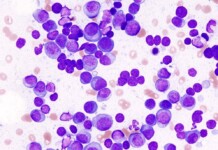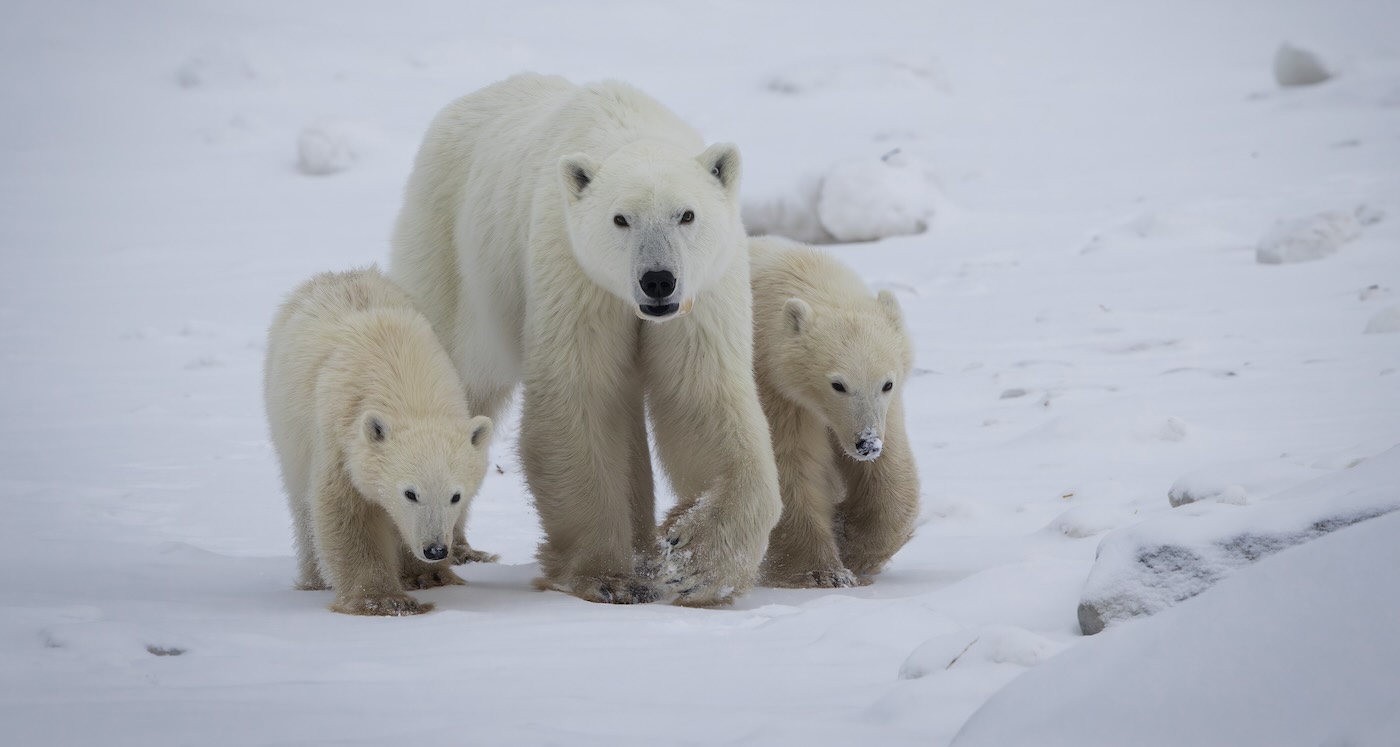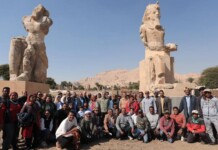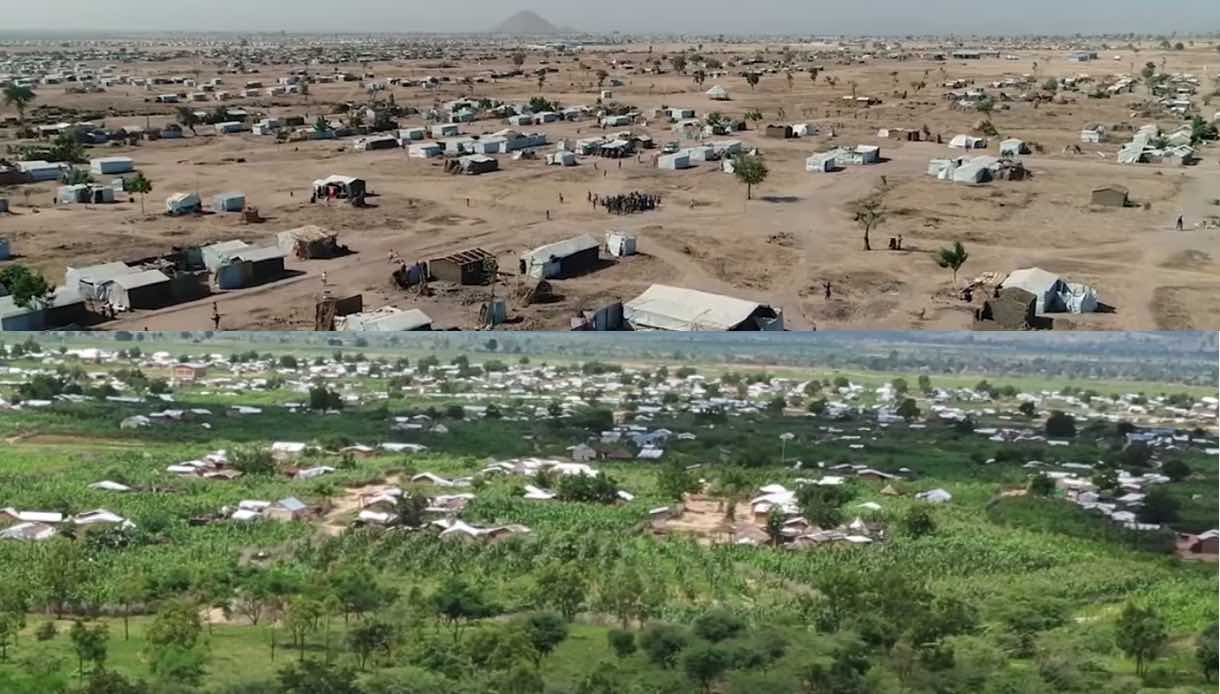What once was brown now has turned green, thanks to a special collaboration between the Dutch Lottery, the UN, and a group of humanitarian Lutherans.
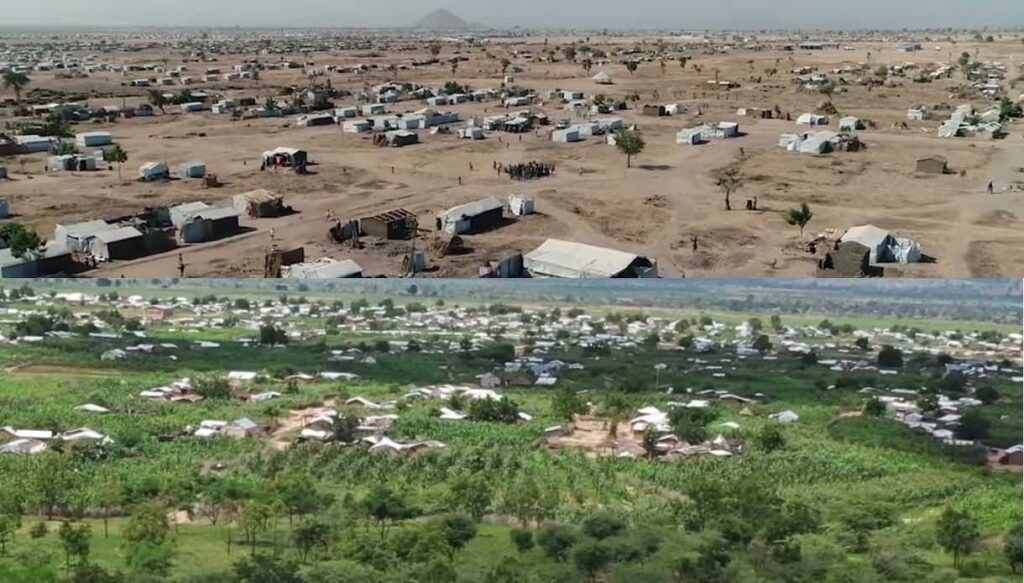
In 2014, Minawao began hosting at least 60,000 refugees in Cameroon who fled violence linked to the Boko Haram insurgency in neighboring Nigeria. An arid region already dusty brown, the refugees’ arrival accelerated the desertification process as they cut down all the surrounding trees for firewood and cooking.
But, in a few years, the Lutheran World Federation (LWF) and the United Nations Refugee Agency (UNHCR) were able to empower the refugees to transform the region into a thriving young forest.
In this very harsh climate, rivers dry up during the summer months and planting and harvesting is difficult. Already, 95% of the people living in this far north region cooked and heated with firewood—additionally, the refugee camp grew to become its own city needing its own supplies.
Before the Nigerians arrived, the local population had enough firewood and “you couldn’t see anyone within 100 meters”. After their arrival, the environment was destroyed and became “treeless for miles,” said Boubakar Ousmary, who governs the canton bordering the camp.
The price of wood rose considerably, causing community conflicts. Faced with this ecological and human disaster, UNHCR and LWF launched its unique program in 2017 that would reverse deforestation and tackle the problem from two ends, including the promotion of renewable energies.
Now the communities are working together, to restore and protect the environment.
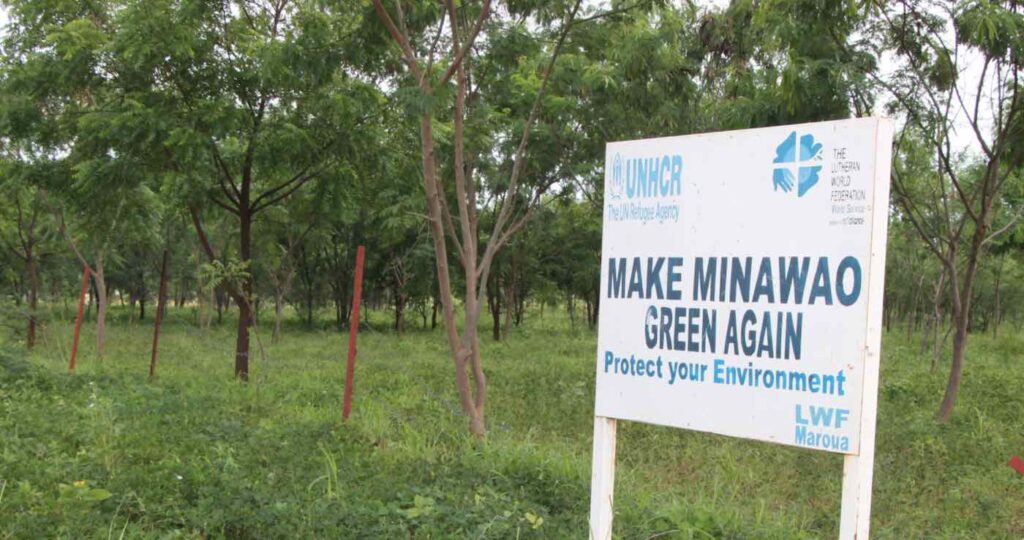
“Everywhere we look is green now,” says Luka Isaac, president of the Nigerian refugees in Minawao. “The trees have grown, we have shade and we will have enough trees to make our environment beautiful and healthy. Before, the air was very dusty. Now the air we breathe is very good.”
Plant trees, harvest fruit
LWF grows fruit trees in nurseries, with the help of refugee volunteers, then distributes the saplings to the camp administrators, schools, mosques, churches, and households.
Refugees received training on how to use “cocoon technology”, developed by Land Life Company, to give seedlings the best chance of survival in the harsh environment. It involves burying a doughnut-shaped water tank made from recycled cartons that surrounds the plant’s roots and feeds it using a string that connects to the young shoot.
Now, four years later, 360,000 seedlings have been grown in the nursery on the outskirts of the camp—and planted throughout 294 acres (119 hectares). And, they are recording 90% survival rates.
Fruit trees, acacias, cashews, or moringas will provide fruit, medicine and much more. A five-year planting and harvest cycle ensures material for firewood, as well as vines for the construction of roofs. After three years, some trees are big enough to be pruned for firewood.
RELATED: Inspired by Marvel’s Mythical ‘Wakanda’, Ugandan Village is Built on Shea Butter and Solar Power
The trees also break the wind, reduce erosion, and provide shade—enough for families to grow crops, something that was not possible previously.
“The trees bring us a lot,” Nigerian refugee Lydia Yacoubou told UNHCR. “First, they provide the shade necessary to grow food. Then, the dead leaves and branches can be turned into a fertilizer for cultivating. Finally, the forest attracts and retains water. Rainfall has even increased.”
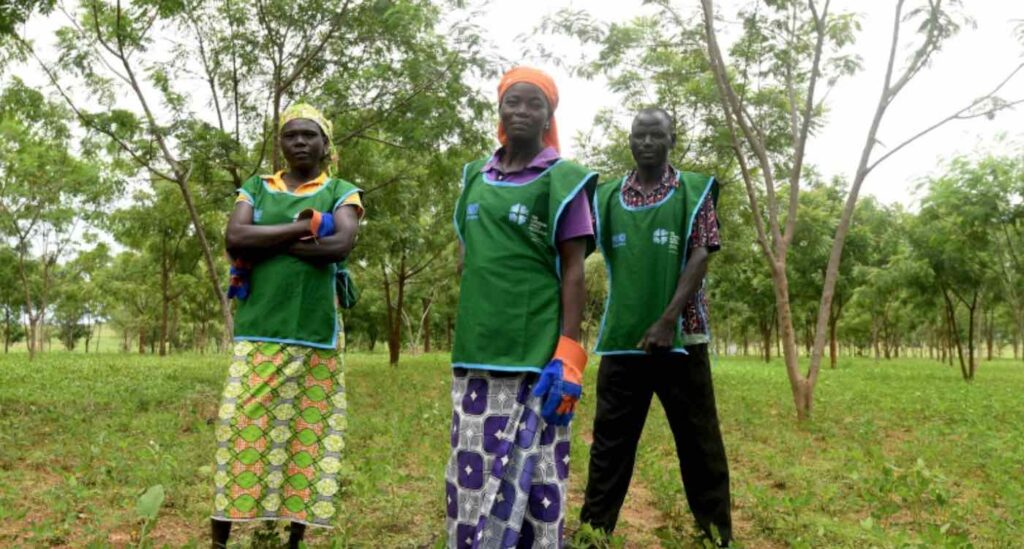
At the same time, the project is providing new livelihoods, while cutting carbon emissions from the burning of wood.
Alternative energy empowers women and girls
To make sure the new forest is not cut down immediately, the production of energy-efficient stoves was launched, along with two centers for ‘ecological charcoal’ production.
The households in the camp send their waste from crops to the charcoal center where it is sorted, dried, carbonized, and compacted into briquettes by trained refugees, which are then used in specially adapted cook stoves. LWF says it has trained more than 5,500 households in the production of ecological charcoal and has distributed a whopping 11,500 energy-efficient stoves.
ALSO in AFRICA: Solar-Powered Desalination Device Will Turn Sea Water Into Fresh Water For 400,000 People
300 people are employed in the production of charcoal and stoves, the majority of them women. Having their own income has empowered them and improved their positions in the families. Since charcoal became the main source for fuel, young girls have more time available to study for school.
Fibi Ibrahim, a refugee and mother of five who has lived in Minawao since 2016, is one of the workers.
“The money I make selling charcoal briquettes allows me to buy soap, seasoning, and meat to supplement the family’s rations,” says Fibi. “I hope that soon, when I have saved enough money, I can start my own shop in the camp and fully meet the needs my household.”
LOOK: Italy is Protecting its Giant Trees Forever – Monumental Trees that Can Live for Centuries
Funded by a $2.7 million donation from the Dutch Postcode Lottery, the Cameroon program is part of the Great Green Wall initiative that aims to grow an 8,000-kilometre swath of vegetation and trees to combat desertification and drought along the border of the Sahara.
Seen from the sky, the evolution of the site in a few years is striking. Video footage shot in 2018 showed vast stretches of sand surrounding buildings and shelters. Now the land is covered with vegetation.
Watch the video from Reuters below…
GROW This Good News By Planting it on Social Media…


